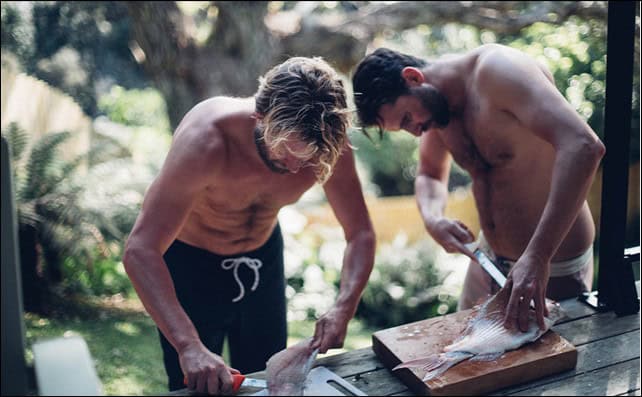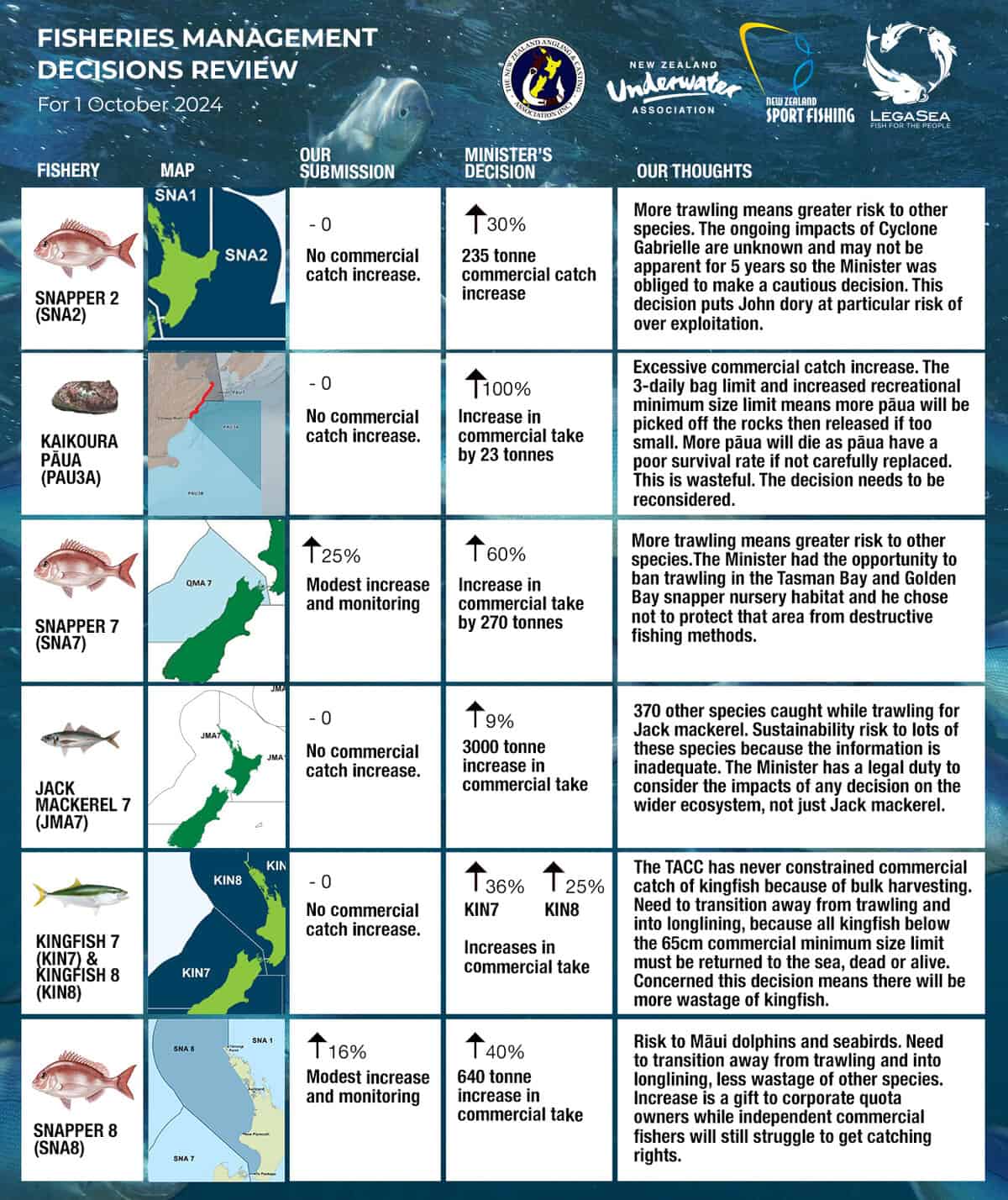WARNING ⚠️- Significant increases have been applied to the Total Allowable Commercial Catch
BREAKING NEWS

The October Sustainability Round
Twice a year, New Zealand’s “Sustainability Rounds” provide a critical opportunity to adjust catch limits, assess fisheries management, and ensure the long-term health of our marine ecosystems.
However, this September, the rounds have taken a troubling turn. Rather than prioritising sustainability, recent decisions by the Minister for Oceans and Fisheries Shane Jones have sparked concerns over the future of our oceans. With significant increases to commercial catch limits, what we’ve seen is anything but sustainable management.

Coastal communities must brace themselves for a surge in offshore trawling this summer. In a move that prioritises commercial profits over environmental sustainability, Shane Jones, the Minister for Oceans and Fisheries, has hiked the catch limits for 12 fish stocks nationwide.
Our LegaSea Project Lead Sam Woolford hasn’t minced his words:
“These excessive increases to the total allowable commercial catch are a green light for intensified trawling. Our marine ecosystems are already teetering under the strain of warming waters, overfishing, and pollution from land-based run-off. The last thing we need is more destruction of the seabed.”
It’s hardly surprising given that Minister Jones, the ex-chairman of Sealord, has openly expressed his intent to ramp up New Zealand’s seafood exports. One could have called this back when he proudly called himself an ‘apostle’ for the fishing industry. And he didn’t flinch when his officials issued proposal papers that largely ignored directions from the High Court. In 2022 the Court was very clear that Ministerial decisions needed to take account of the effects of fishing for one species, and how that impacts on other species. A decision laser-focused on commercial gain, with little regard for the long-term health of our oceans, seemed inevitable.
Scott Macindoe, President of the New Zealand Sport Fishing Council, has echoed these concerns: “The science is crystal clear about the damage trawling inflicts, yet the Minister is pushing for more of it. It’s glaringly obvious that these decisions serve short-term commercial interests, not the well-being of Kiwis or our marine environment.”
A breakdown of the main decisions. Click image to see enlarged view
Significant increases have been applied to the Total Allowable Commercial Catch (TACC) for west coast snapper, kingfish, and Jack mackerel.
LegaSea and the New Zealand Sport Fishing Council have warned that these increases will inevitably escalate bycatch of already stressed species like trevally, red gurnard, John dory, and tarakihi.
Sam Woolford stressed the shortsightedness of the approach:
“We need to understand that increasing catch limits will impact the entire marine environment, not just the target species. Sadly, the outdated Quota Management System is stuck in a single-species mindset.”
Despite lacking comprehensive advice from Fisheries New Zealand on the broader impacts, the Minister forged ahead. Recreational groups had urged caution to prevent irreversible harm to fish populations, but our pleas fell on deaf ears.
Scott Macindoe hasn’t held back:
“If we care about leaving a healthy fishery for future generations, we must shift to more selective fishing methods and safeguard the seabed. Longlining offers a low-impact alternative to destructive trawling, but clearly profit has trumped conservation.”
The Fisheries Act requires the Minister to consider the past, present, and future effects of fishing on all marine life, not just the target species. Yet, with these new catch limits, it appears that holistic environmental stewardship has been sidelined in favour of immediate commercial gain.
You can see full list of decisions here.
—
supplied by LegaSea









